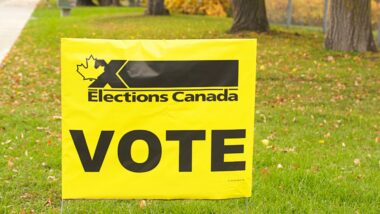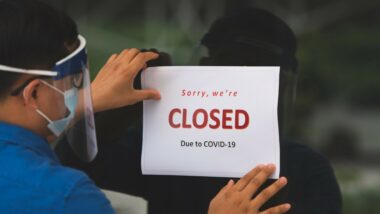Top Class Actions’s website and social media posts use affiliate links. If you make a purchase using such links, we may receive a commission, but it will not result in any additional charges to you. Please review our Affiliate Link Disclosure for more information.
Mass closures across Canada due to COVID-19 safety measures have extended to numerous business domains, resulting in a new phenomenon: COVID-19 layoffs. Both employees and employers have been significantly affected by the pandemic; about one in three workers in Ontario were impacted by the economic shutdown.
While COVID-19 continues to transform Canadian workplaces, uncertainty looms as closures and declines in demand escalate. As a result, many employers issued temporary layoffs. For example, in March, Reitmans announced it would layoff 90 percent of its retail employees.
Lawyers, however, warn that COVID-19 layoffs may be illegal and lead to litigation. Employers and employees may therefore find themselves wondering whether temporary layoffs during COVID-19 are legal.
Can My Employer Temporarily Lay Me Off?
The short answer is yes. There are nevertheless different requirements for doing so, and these vary from province to province.
A temporary layoff generally refers to a provisional period in which an employer ceases to provide work (and typically pay) to employees. A temporary layoff differs from termination, the latter referring to a permanent layoff with no intention to re-hire. The definition of “layoff” varies by jurisdiction. In Ontario, for example, a layoff week is defined as a week where the employee earns less than half of what they would earn at their usual rate during a regular work week. Alternatively, a layoff week also refers to earnings amounting to half of the average earnings for the 12 weeks prior to the layoff.
Regardless of applicable federal or provincial legislation on temporary layoffs, where a temporary layoff is not expressly permitted in an employment contract, collective agreement, or in some cases, a workplace policy, the layoff runs the risk of eliciting a constructive dismissal claim.
Are Employers Required to Pay Employees on Temporary Layoff?
Layoffs are usually unpaid. However some payments or benefits may be required during the layoff period, subject to certain conditions and the jurisdiction. The federal and many provincial governments instituted special COVID-19 leave of absence rules. These changes ensure certain protections for employees, such as prohibitions on laying off employees while on a leave of absence.
What About Group Terminations?
Where an employer lays off many employees in a short period of time, provincial statutory group termination obligations may apply. For example, British Columbia group termination entitlements apply where 50 or more employees are laid off within a two-month period, subject to certain exceptions. These obligations may include providing a written notice to the appropriate government authority and to the employees. Further obligations may ensue if the layoffs are considered terminations and if there are collective agreements requiring pay or other benefits.
Legislative Requirements for Temporary Layoffs
Alberta
In Alberta, temporary layoffs are permitted where employers provide employees with a written layoff notice. Unless a collective agreement provides otherwise, the notice must be delivered in accordance with an employee’s length of service.
In light of COVID-19, the Alberta government suggested that the pandemic is an “unforeseeable circumstance” requiring employers to provide as much notice as possible to employees.
While temporary layoffs in Alberta cannot exceed 60 days in a 120-day period, the habitual 60-day period has been extended during COVID-19 to 120 days.
On March 17, 2020, the Alberta government amended the provincial Employment Standards Code to allow full-time and part-time employees to take up to 14 consecutive days of unpaid, job-protected leave where they need to self-isolate or care for a dependent who needs to self-isolate.
British Columbia
Employers in British Columbia may only temporarily lay off an employee if:
- The employment agreement allows it;
- With the consent of the employee; or
- By a recognized industry-wide practice.
In the absence of any of the above elements, a reduction in hours may be considered a substantial alteration of employment, which can constitute a termination.
According to pre-COVID-19 provincial labour law, temporary layoffs may not exceed 13 weeks in a 20-week period. However, British Columbia recently approved an Order in Council temporarily amending the Employment Standards Regulation, to extend the period of temporary layoff to up to 16 weeks during 20 consecutive weeks, if COVID-19 is the reason for the layoff.
In March 2020, British Columbia established an unpaid, job-protected leave for employees who are unable to work due to a COVID-19 diagnosis, quarantine or self-isolation, directive from an employer to stay home, need to care for a dependent for COVID-19 reasons, or are outside of the province and are unable to return. The COVID-19 labour law changes also prohibit employers from requiring a doctor’s note from employees for this leave.
Ontario
In Ontario, a temporary layoff without the express or implied consent of the employee is a constructive dismissal. However, it is not a constructive dismissal if there is an employment agreement and/or company policy that specifically sanctions temporary layoffs, subject to the Employment Standards Act, 2000.
Temporary layoffs can only last 13 weeks or less, in any period of 20 consecutive weeks. However, a “week of layoff” is a week in which an employee earned less than half of what would normally be earned in a week. In such cases, legislation does not require employers to provide a written notice or reasons for the layoff.
Under certain circumstances, a temporary layoff can be extended to a period of less than 35 weeks in any period of 52 consecutive weeks. This can be done where, for example, the employee continues to receive substantial payments or supplementary unemployment benefits from the employer.
In response to the COVID-19 crisis, the Ontario legislature amended the Employment Standards Act, 2000 to provide employees with an unpaid, job-protected leave of absence for reasons related to COVID-19 and other infectious diseases.
Similar to other provincial COVID-19 layoff amendments, employees are entitled to this leave where they are under medical investigation, supervision or treatment related to COVID-19, the employee is in quarantine or isolation, the employee was directed by the employer to stay home, the employee needs to care for specified individuals for reasons related to COVID-19 or other infectious diseases, or the employee is directly affected by travel restrictions, among others.

Quebec
In Quebec, a temporary layoff cannot exceed six months. Layoffs that exceed this limit will be deemed a termination, in which case the laid off employee may be entitled to termination pay. The layoff period may be longer where consented to in a collective agreement.
Terminating employment requires payment to the employee. However, there is an exception to this requirement, namely, where the termination or layoff was as a result of “superior force.” “Superior force” refers to an unforeseeable and inevitable event, such as the H1N1 virus, recognized by Quebec courts to meet the legal criteria. As such, many assume that COVID-19 will also be included in this definition.
Can Employers Screen Employees’ Temperatures?
Some employers have implemented temperature screening prior to allowing employees to return to work. This practice may pose issues concerning provincial human rights legislation, especially as it concerns privacy and health-related discrimination protections.
For example, human rights and privacy legislation in many provinces, such as Quebec, place restrictions on employers’ ability to require medical examinations or health testing on employees. Unless the examination or testing is reasonably required to assess an employee’s ability to work, compulsory testing through temperature checks would likely not be permitted. By contrast, provincial occupational health and safety legislation requires employers to take reasonable care to ensure a safe and healthy work environment.
Lawyers have argued that during the current pandemic, taking employee temperatures may be reasonable and even necessary to meet an employer’s occupational health and safety obligations.
Employers must therefore balance competing legal considerations before deciding whether to introduce policies regarding employee temperature checks. Where employers decide to institute such policies, the legal community advises to do so in a minimally invasive manner that respects employee dignity and privacy.
COVID-19 Human Rights Concerns
Although Canadian provinces are still in a state of emergency, employers’ legal obligations under human rights legislation continue to apply. For example, employers cannot discriminate against employees and must accommodate workers with disabilities up to the point of undue hardship. Numerous provincial human rights commissions have published policy statements regarding COVID-19 human rights issues in the workplace.
For example, the Ontario Human Rights Commission published a COVID-19 policy for employers. As per the statement, human rights legislation prohibits the negative treatment of employees who have, or are perceived to have, COVID-19, for reasons unrelated to public health and safety. Additionally, if an employee is required to self-isolate for legitimate reasons, the employer should explore alternative options as to how the employee may continue to work.
As businesses slowly open their doors to the public and workers head back to the office, jurists and courts will need to answer the many COVID-19 labour law questions, as well as deal with the legal consequences of the pandemic.
Were you terminated or temporarily laid off due to the COVID-19 pandemic? If you’re still traveling to work, does your employer screen your temperature? Tell us your story in the comment section below!
Read More Lawsuit & Settlement News:
Promutuel Facing COVID-19 Insurance Class Action Over Insurance Denials
Alberta Lawyers Prepare for Post-Pandemic Lawsuits
Canadian Insurance Industry Faces Another COVID-19 Class Action Lawsuit
Terminated Steve Nash Fitness World Employees File Class Action Lawsuit
ATTORNEY ADVERTISING
Top Class Actions is a Proud Member of the American Bar Association
LEGAL INFORMATION IS NOT LEGAL ADVICE
Top Class Actions Legal Statement
©2008 – 2024 Top Class Actions® LLC
Various Trademarks held by their respective owners
This website is not intended for viewing or usage by European Union citizens.


















One thought on COVID-19 Layoffs: Your Questions Answered
I was laid off due to covid 19. I was put on 60day temporary lay off which got extended to 120 days which got extended to 180 days. Few weeks after my initial lay off the company laid off a few more employees. 1 or more of the employees that were laid off after me that hold the same position as me were called back to work before me. Attempt by email or text to management was ignored and never returned 6 months later I ended up having to relocate to a different province in order to find myself a new job. The only time I got reply back from the employer was once I told them I found another job. Is there anything I can do?